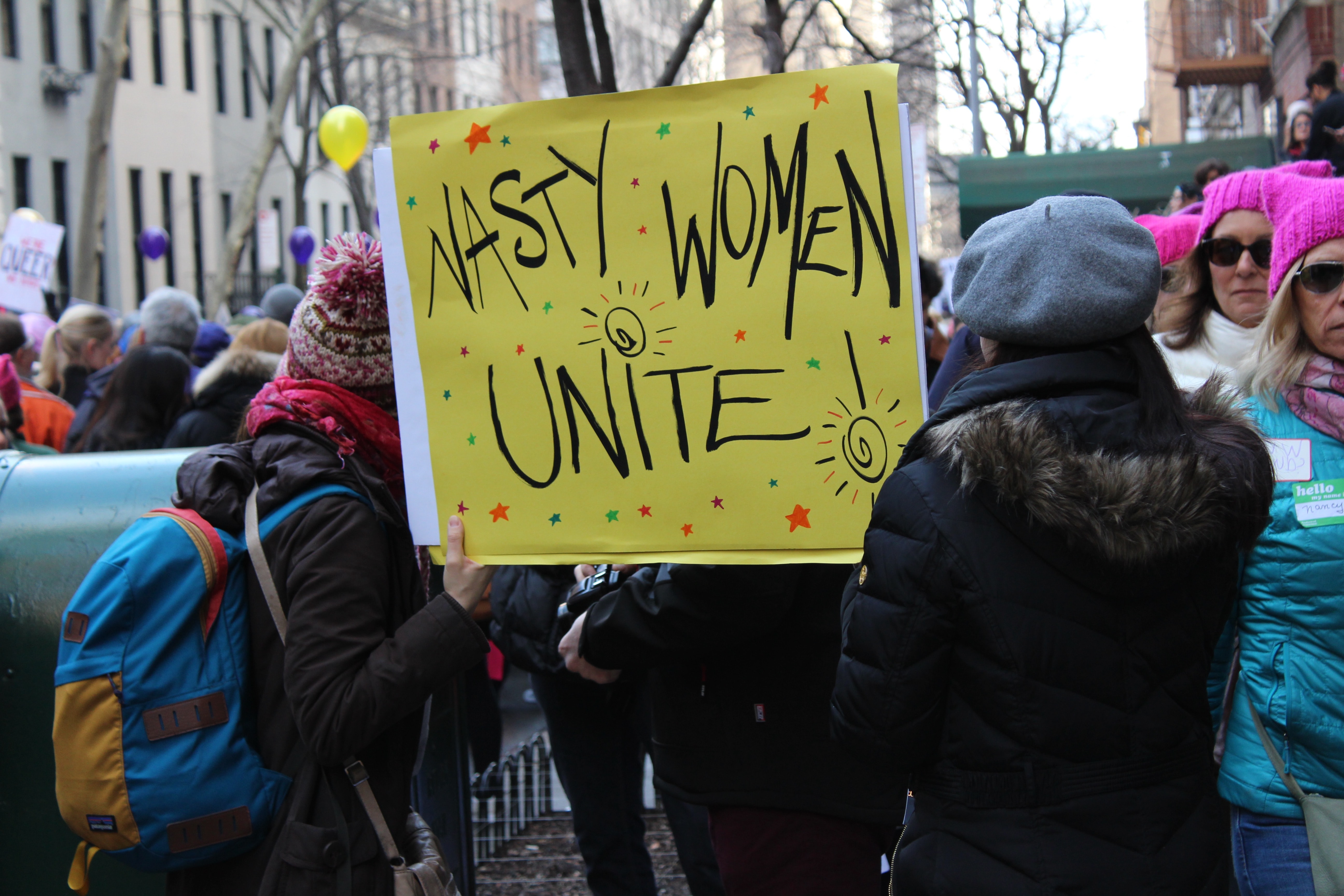Chapter 5. The Women's March, Digital-Material Assemblages, and Embodied Difference
The third and final case study continued with craft's digitality and examined how activism and protest organizing in the 21st century rely on digital tools. Leigh Gruwell (2022) begins this case study with the background of the Women's March held in January 2017 to note that planning began on Facebook and that digital tools played an essential role in organizing marches across the country (p. 104). By applying craft agency to the Women's March, Gruwell shows readers the successes and, most notably, the shortcomings of the 2017 protest. Overall, craft agency allows us to plan and look at such protests critically.
But rather than focusing on one materiality (digital or physical), Gruwell argues that the digital and physical are not separate when it comes to protesting (pp. 109–110). Instead, they are co-constitutive. To be successful, protests must "embrace craft agency, which recognizes how the material specificity of all actors shape their agential capacities while also acknowledging how agents—both physical and digital—bleed into and shape one another" (pp. 115–116).
Digital food activism similarly embraces the physical and digital. As Karin Eli, Tanja Schneider, Catherine Dolan, and Stanley Ulijaszek (2018) explained, digital food activism "encompasses forms of food activism enabled and shaped by and through digital media platforms" (p. 203). Like the Women's March, bake sale organizers have turned to social media. After George Floyd was murdered on May 25, 2020, chefs Paola Velez, Willa Pelini, and Rob Rubba created Bakers Against Racism (2020) to raise funds to fight systemic racism. They relied on social media and Google Drive to organize participants and advertise bake sales. Indeed, relying on digital platforms gave bakers the resources they needed to run their bake sales. Digital artifacts, including artwork, virtual bake sale tips, and information for managing online order forms made organizing bake sales without a central location possible.
The most valuable analysis from this case study was Gruwell's attention to the Women's March's failures. Such failures included ignoring trans bodies and "centering white women—or more specifically, the genitals of cis white women" (p. 124) by choosing pink for the march's iconic pussy hats. Without recognizing protesters' embodied differences, such movements remain problematic by depicting feminism as a white, middle- to upper-class, cisgender, heterosexual, able-bodied action. One of the chapter's takeaways was that feminists must recognize diverse feminist bodies, and craft agency is a way to do this work. Christina Tosi encountered a similar failure in her COVID-19 Instagram community after Floyd's murder (Beardsley, 2022, p. 230–233). Instagram users commented on her post and criticized her for not using her platform to speak out against racial injustice (Tosi, 2020b), after which she briefly paused Bake Club to reflect on how to use her platform to support the work of BIPOC creators. When Bake Club returned, Tosi invited BIPOC bakers to take over her Instagram account and used her privilege to show diverse representation in the food industry. I mention this failure and reflection here because it served as a way for Tosi to enact craft agency to restructure the Bake Club community. With Bake Club's return, she shifted the focus to join organizations like Bakers Against Racism and use her digital platform and physical baked goods for activism.
